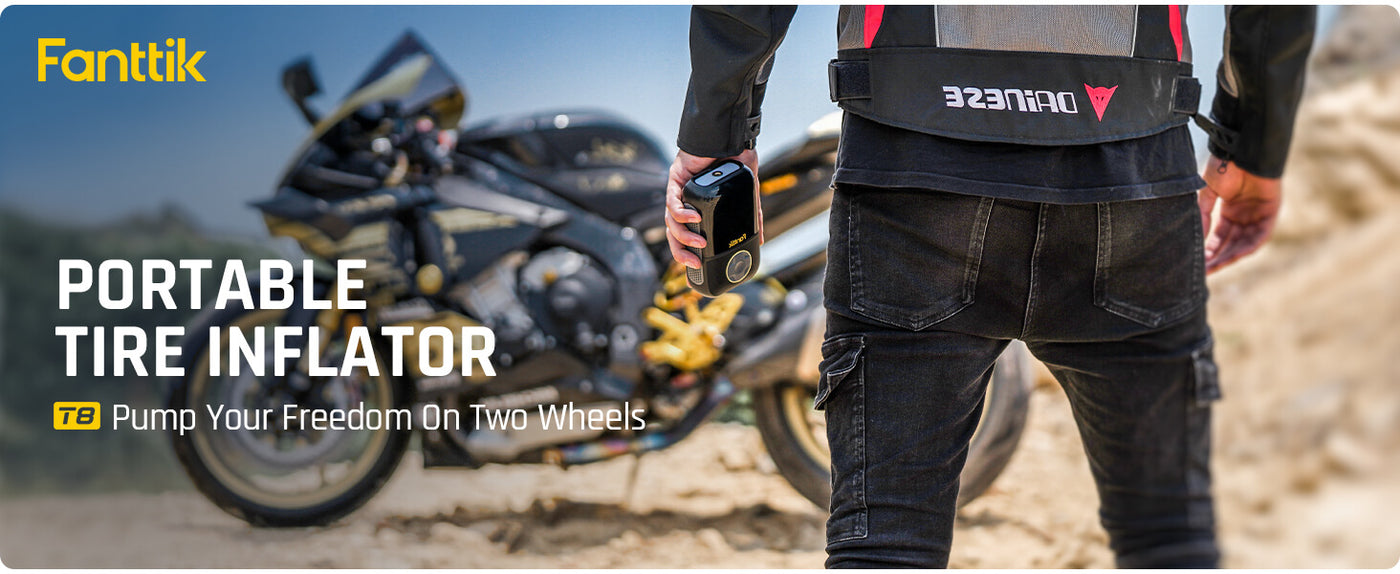Unlock the Secrets to Effortless Tire Inflation: Master Your Car Pump Today!
Maintaining proper tire pressure is a crucial aspect of vehicle safety and efficiency. Under-inflated tires can lead to poor handling, reduced fuel economy, and increased tire wear, while over-inflated tires can result in a harsh ride and compromised traction. A car tire air pump serves as an essential tool for topping off tire pressure, ensuring that your vehicle operates at its best. Whether you are a seasoned driver or a new car owner, understanding how to use a tire air pump can save you time and money while enhancing your driving experience. In this article, we will explore the significance of tire pressure, the different types of pumps available, and provide a comprehensive guide on how to use a car tire air pump effectively.

Understanding Tire Pressure and Its Importance
Tire pressure refers to the amount of air inside your tires measured in pounds per square inch (PSI). Maintaining the correct tire pressure is vital for several reasons. First, properly inflated tires provide better traction, handling, and braking performance. This is especially important in adverse weather conditions, where tire grip can make a significant difference in safety. Second, tire pressure affects fuel efficiency. Under-inflated tires can increase rolling resistance, meaning your engine has to work harder to move the vehicle, leading to higher fuel consumption. Additionally, regularly checking and maintaining tire pressure can prolong the life of your tires by preventing uneven wear and tear. Friends of mine who have experienced flat tires due to neglecting tire pressure have learned the hard way the importance of routine checks, making it a priority before every long trip.
Types of Car Tire Air Pumps
When it comes to car tire air pumps, there are two primary types: manual pumps and automatic pumps. Manual pumps, often referred to as hand pumps, require physical effort to inflate tires. They are portable, cost-effective, and an excellent option for those who prefer a hands-on approach. However, they can be labor-intensive and time-consuming, making them less appealing for busy individuals. On the other hand, automatic pumps are powered by electricity or batteries and can inflate tires quickly and efficiently with minimal effort. Many models come with built-in pressure gauges, automatic shut-off features, and LED lights for added convenience. The choice between the two often comes down to personal preference and specific needs—my friend, who frequently travels for work, swears by his automatic pump for its speed and ease of use, while another prefers the simplicity of a manual pump for its reliability on camping trips.
How to Use a Car Tire Air Pump Effectively
Using a car tire air pump can be straightforward if you follow some simple steps. First, gather the necessary tools: your tire air pump, a pressure gauge, and potentially a small towel for any spills. Begin by checking the current pressure of your tires with a pressure gauge; this will inform you of how much air you need to add. Next, ensure that your tire is cool to the touch, as heat from driving can give a false reading. Once you're ready, connect the pump's nozzle securely to the tire valve stem; you should hear a hissing sound indicating air is flowing. If using a manual pump, begin pumping until you reach the desired PSI. For automatic pumps, set the desired pressure and allow the pump to do its job, stopping automatically once the correct pressure is achieved. Finally, remove the pump carefully and replace the valve cap. Always double-check the pressure with a gauge after inflating to ensure accuracy. This step is particularly important; my brother once over-inflated a tire because he skipped this check, leading to a costly blowout on the highway.
Tips for Accurate Inflation
To ensure accurate tire inflation, follow these practical tips: first, always check your tire pressure when the tires are cold, as driving can heat up the tires and cause higher pressure readings. Second, avoid over-inflation by regularly checking your vehicle’s recommended PSI, usually found in the owner’s manual or on a sticker inside the driver’s door. Using a reliable pressure gauge before and after inflating will help you achieve the perfect balance. Lastly, consider inflating your tires during the morning or evening when the temperature is cooler, as this can lead to more accurate readings compared to the heat of midday. My friend learned this the hard way when she inflated her tire during a hot afternoon and later found it was too high after checking at night.
Common Mistakes to Avoid
When using a tire pump, it’s essential to avoid common mistakes that can compromise safety and effectiveness. One prevalent error is neglecting to check the recommended PSI, which can lead to under or over-inflation. Another mistake is failing to check the tire pressure regularly; many drivers assume that if a tire looks fine, it is fine. However, tires can lose air gradually without any visible signs. Additionally, some people forget to recheck the pressure after inflating, which can result in driving on improperly inflated tires. Lastly, be cautious when using a manual pump; over-exerting yourself can lead to fatigue and errors in inflation. Friends have shared their stories of frustration due to these common pitfalls, emphasizing the importance of being diligent and informed.
Essential Tips for Tire Maintenance
In conclusion, maintaining proper tire pressure is essential for safe and efficient driving. Utilizing an easy-to-use car tire air pump for topping off your tire pressure can help you achieve this goal effortlessly. By understanding the significance of tire pressure, familiarizing yourself with different types of pumps, and following a step-by-step guide for effective use, you can ensure that your tires are always in optimal condition. Remember to regularly check and maintain your tire pressure to enhance your vehicle's performance and safety. By making tire maintenance a regular part of your driving routine, you’ll not only extend the life of your tires but also enjoy a smoother, more efficient ride.








